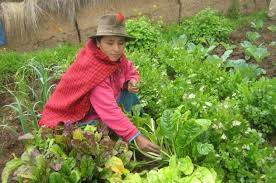Man is an important factor in the environment whose activities interfere positively or negatively with the environment. The various activities of man lead to an exchange of material within the environment in a continuous cycle. With the increase in population, urbanization, industrialization, and agricultural production activities, much pressure is exacted on the environment, leading to environmental degradation.
This calls for the efficient use, conservation, and management of the environment and natural resources in general. In this article, an understanding is provided of the meaning and objectives of conservation, energy conservation, mineral conservation, conservation of renewable resources, as well as fish and biodiversity conservation—all essential for sustainable agriculture.
Read Also: 12 Medicinal Health Benefits of Emilia Sonchifolia (lilac tasselflower)
Meaning and Objectives of Conservation in Agriculture
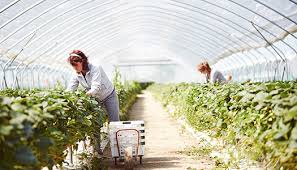
Conservation is the summation of efforts made by man to achieve environmental friendliness and reduce the loss of biodiversity and the biosphere to the advantage of all life, including that of man.
Jhingan and Sharma (2008) defined conservation as management for the benefits of mankind and the biosphere to ensure sustainable benefits to the present generation while maintaining its potential to meet the needs and aspirations of the future generation. The objectives of conservation include:
i. Ensuring environmental protection through conservation.
ii. Efficient and rational use of natural resources.
iii. Protecting the Earth to ensure sustainable living and lifestyles.
Energy Conservation in Agriculture
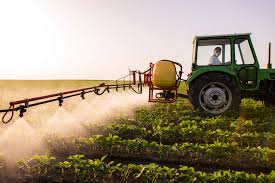
The purpose of energy conservation is to:
i. Improve the efficiency of energy supply systems;
ii. Decrease the energy intensiveness of a given standard of living through an acceptable lifestyle—for instance, thermostat settings, lighting levels, or the use of smaller cars and car-pooling;
iii. Shift from gas or electricity to solar energy systems.
Optimum energy conservation means a long-run efficient use of energy for the benefit of mankind along with short-run effects. Energy conservation requires that:
i. The value of energy saved must be equal to or greater than the additional operating cost or investment (at a discounted rate) required to achieve it;
ii. There must be an increase in energy supply when compared with an alternative energy source;
iii. The alternative conservation option must be superior in terms of cost implications including capital investment, price of energy, and socioeconomic and environmental impacts when compared with non-exhaustive energy sources.
Mineral Conservation for Sustainable Agriculture
Mineral conservation involves the efficient use of mineral resources. Some energy resources, such as non-renewable energy resources, cannot be recycled or reused; therefore, they require efficient and proper management.
Environmental pollution emanating from mining activities can be reduced through efficient methods. Examples of non-renewable mineral resources that cannot be recycled or reused include coal, oil, and natural gas. Some examples of mineral resources that can be recycled or reused to some extent include copper and aluminum.
Conservation of Renewable Resources in Agricultural Systems
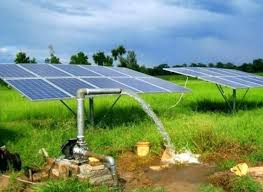
Land, soil, minerals, water, vegetation, and wildlife are important resources that support the growth and performance of plants and animals beneficial to man. It is therefore important to conserve these resources to avoid misuse and depletion.
Soil conservation involves several measures aimed at sustaining the soil and preventing soil degradation. Some of these measures include erosion control, planting trees and cover crops, strip cropping, and crop rotation methods.
Water conservation measures involve the efficient use of water (avoiding waste), encouraging water recycling, reducing water pollution (by treating sewage and industrial waste before disposal), and adopting good technologies for groundwater recharge (such as the use of dug wells and ponds). Efficient water management is essential for human development, water availability, and sustaining the water cycle and crop production.
Forest conservation is important as it provides, among other things, raw materials, income, employment, and fuel, and provides a home for both micro and macro animals. It is also essential in regulating the amount of rainfall, controlling erosion, reducing the silting of streams, and preventing floods.
Forest conservation measures include avoiding the indiscriminate felling of trees, deforestation, and bush burning. The use of pesticides and insecticides that can destroy insects in the forest but may pollute and harm other organisms should be avoided.
Read Also: Factors Affecting Mineralization and Nitrification Dendrobium Nobile Medicinal Plant
Fish Conservation in Agriculture
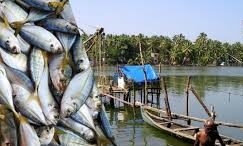
Fish is an important natural resource that supplements existing food resources. Therefore, there is a need to ensure increased yield of this important resource. For increased fish yield, attention must be paid to artificial breeding under controlled conditions in lakes, ponds, rivers, and seas.
Fish conservation practices involve the regulation of fishing and fish production, prohibition of overfishing, ensuring that only fully matured fish are harvested, and increasing the rate of fish breeding.
Biodiversity Conservation for Sustainable Agricultural Development
Increasing search for wildlife for food, income generation, and human sustenance has led to the extinction or disappearance of some wildlife species. Some important animal species have gone extinct as a result of over-exploitation for either domestic or commercial purposes.
For example, the selling of the skins of leopards, tigers, and other animals has drastically reduced the existence of these species. Animals like the lion are almost approaching nonexistence.
Biodiversity conservation measures require positive incentives that will encourage individuals, private organizations, and government to protect biodiversity.
These incentives could be in monetary terms or other forms. The internalization of the cost of use and damage to biodiversity should be adopted. This measure will not only help reduce but also discourage actions that lead to the depletion of biodiversity resources. Another conservation measure is to encourage eco-labeling for biological resources.
An effective and practical approach involving local task forces for monitoring should be implemented. Government should ban the exploration and export of endangered animal and plant species.
Other measures include well-planned and coordinated efforts for the sustainable use of biodiversity within forestry, fisheries, and agricultural systems. Equitable sharing of biodiversity using social and economic instruments is also essential.
This article has provided an understanding of the meaning and objectives of conservation, energy conservation, mineral conservation, conservation of renewable resources, fish conservation, and biodiversity conservation. The conservation and management of natural resources are critical for sustainable agriculture and for ensuring that the environment can continue to support the growing needs of the present and future generations.
Do you have any questions, suggestions, or contributions? If so, please feel free to use the comment box below to share your thoughts. We also encourage you to kindly share this information with others who might benefit from it. Since we can’t reach everyone at once, we truly appreciate your help in spreading the word. Thank you so much for your support and for sharing!
Read Also: 8 Amazing Health Benefits to Eating Hot Peppers
Frequently Asked Questions
We will update this section soon.

